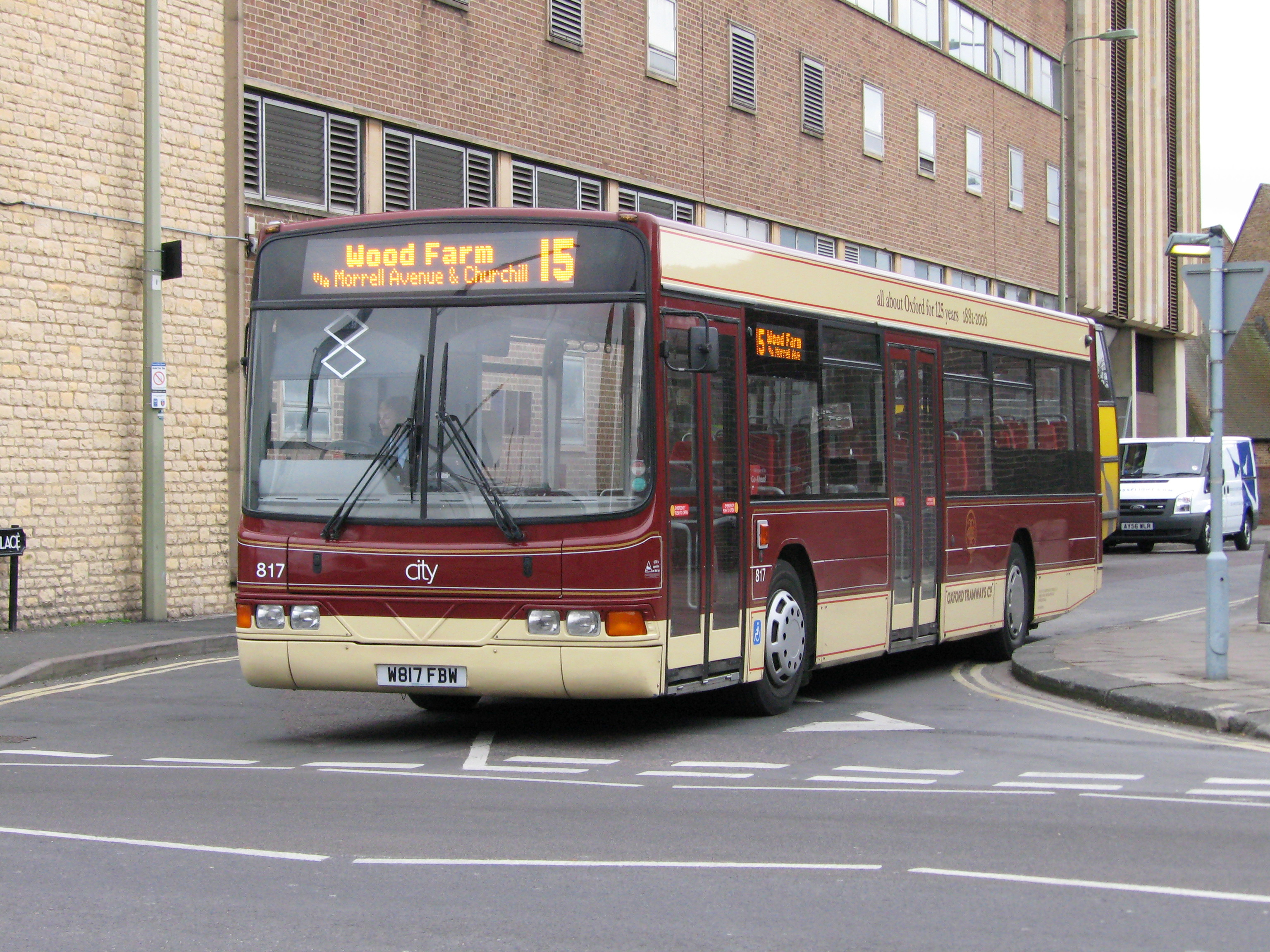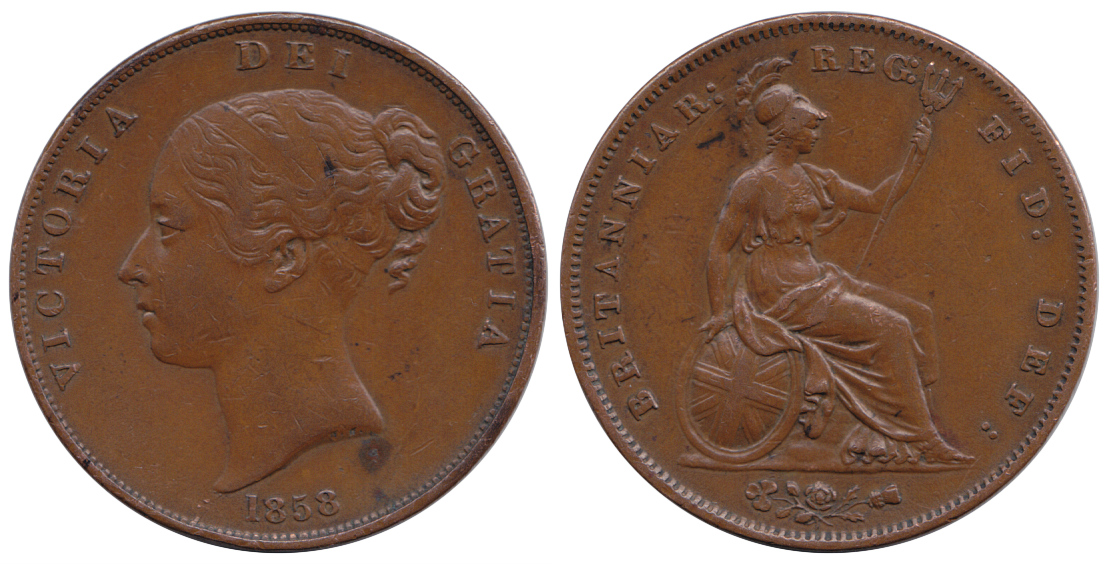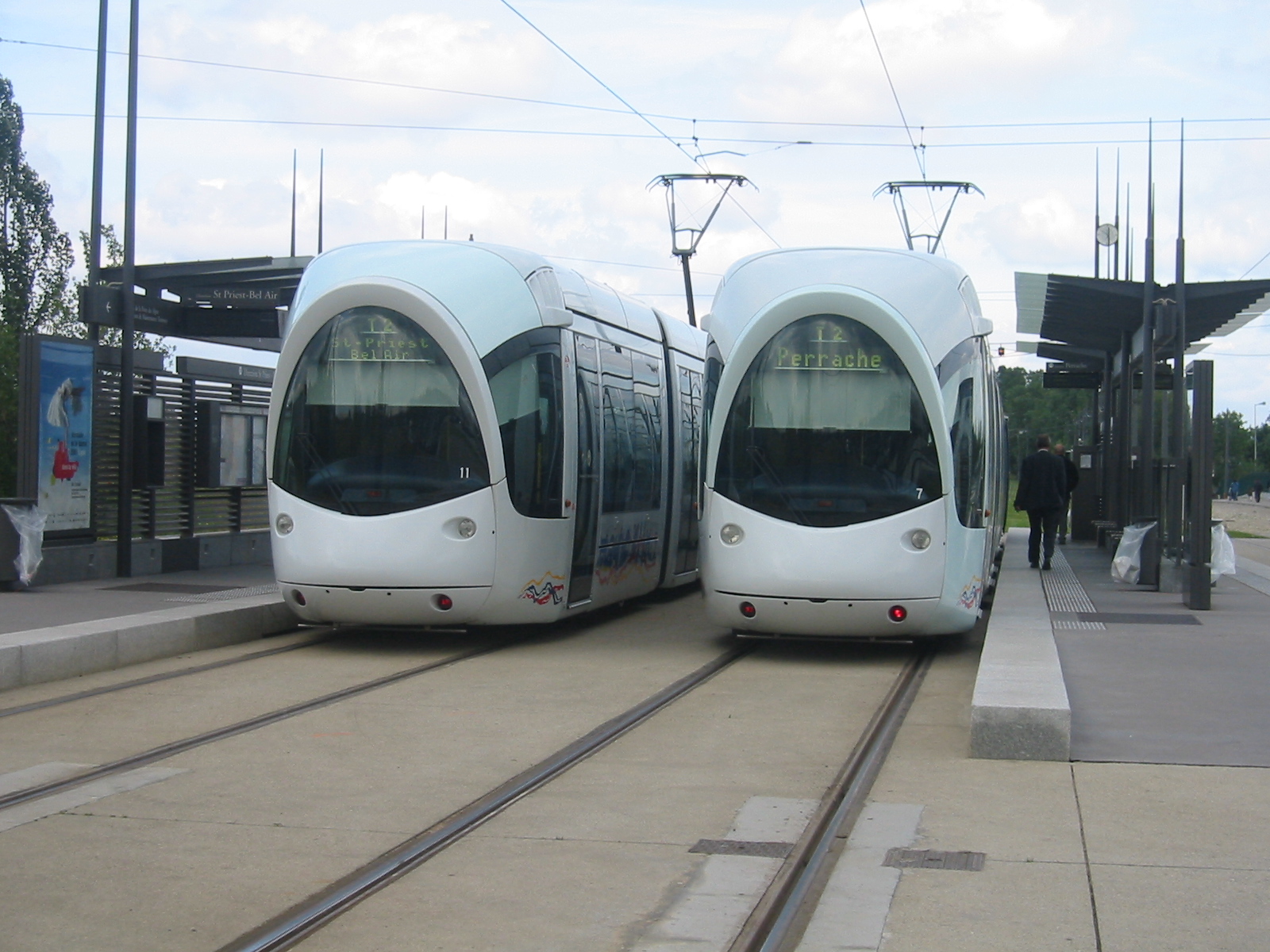|
City Of Oxford Tramways Company
The City of Oxford and District Tramway Company and its successor the City of Oxford Electric Traction Company operated a horse-drawn passenger tramway service in Oxford between 1881 and 1914. The tramway was unusual for having a track gauge of only . Network and fleet The City of Oxford and District Tramway Company was incorporated under the Oxford Tramways Order (1879) in accordance with the Tramways Act 1870. Its initial capital was £42,000 raised by an issue of £10 shares. The first route linked Oxford railway station and Oxford Rewley Road railway station with Cowley Road via Queen Street, Carfax and High Street. Its eastern terminus was at the junction with Magdalen Road. Major General Charles Scrope Hutchinson from the Board of Trade inspected it on 28 November 1881. It opened to the public on 1 December 1881. On 28 January 1882 a second route was opened from Carfax to Rackham Lane via Cornmarket Street, Magdalen Street, St Giles Street and Banbury Road. On 15 July ... [...More Info...] [...Related Items...] OR: [Wikipedia] [Google] [Baidu] |
Oxford
Oxford () is a city in England. It is the county town and only city of Oxfordshire. In 2020, its population was estimated at 151,584. It is north-west of London, south-east of Birmingham and north-east of Bristol. The city is home to the University of Oxford, the oldest university in the English-speaking world; it has buildings in every style of English architecture since late Anglo-Saxon. Oxford's industries include motor manufacturing, education, publishing, information technology and science. History The history of Oxford in England dates back to its original settlement in the Saxon period. Originally of strategic significance due to its controlling location on the upper reaches of the River Thames at its junction with the River Cherwell, the town grew in national importance during the early Norman period, and in the late 12th century became home to the fledgling University of Oxford. The city was besieged during The Anarchy in 1142. The university rose to dom ... [...More Info...] [...Related Items...] OR: [Wikipedia] [Google] [Baidu] |
Beaumont Street
Beaumont Street is a street in the centre of Oxford, England. The street was laid out from 1828 to 1837 with elegant terraced houses in the Regency style. Before that, it was the location of Beaumont Palace, now noted by a plaque near the junction with Walton Street. Nikolaus Pevsner considered it "''the finest street ensemble of Oxford.''" Richard I of England (reigned 6 July 1189 – 6 April 1199) and John, King of England who succeeded him (reigned 6 April 1199 – 19 October 1216), both sons of Henry II of England, were born at Beaumont Palace in Oxford on 8 September 1157 and 24 December 1166 respectively. At the western end is Worcester College and the junction with Walton Street to the north and Worcester Street to the south. Halfway along to the north is St John Street. To the south is the Oxford Playhouse, designed by Sir Edward Maufe and built in 1938, where many University productions are held. To the north at the eastern end is the Ashmolean Museum. Opposite ... [...More Info...] [...Related Items...] OR: [Wikipedia] [Google] [Baidu] |
Worcester College, Oxford
Worcester College is one of the constituent colleges of the University of Oxford in England. The college was founded in 1714 by the benefaction of Sir Thomas Cookes, 2nd Baronet (1648–1701) of Norgrove, Worcestershire, whose coat of arms was adopted by the College. Its predecessor, Gloucester College, had been an institution of learning on the same site since the late 13th century until the Dissolution of the Monasteries in 1539. Founded as a men's college, Worcester has been coeducational since 1979. The Provost is David Isaac, CBE who took office on 1 July 2021 , Worcester College had a financial endowment of £41.9 million. Notable alumni of the college include the media mogul Rupert Murdoch, television producer and screenwriter Russell T Davies, US Supreme Court justice Elena Kagan, Fields Medalist Simon Donaldson, and novelist Richard Adams. Buildings and grounds The buildings are diverse, especially in the main quadrangle: looking down into the main quadrangle f ... [...More Info...] [...Related Items...] OR: [Wikipedia] [Google] [Baidu] |
Taylor Institution
The Taylor Institution (commonly known as the Taylorian) is the Oxford University library dedicated to the study of the languages of Europe. Its building also includes lecture rooms used by the Faculty of Medieval and Modern Languages, University of Oxford. Since 1889, an Annual Lecture on a subject of Foreign Literature has been given at the Taylorian Institution. History The Taylor Institution was established in 1845, funded largely by a bequest from the estate of the notable architect Sir Robert Taylor (1714–1788). Modern European languages were not then taught at the University. (Not until 1903 were a Medieval and Modern Languages Faculty and Honours School instituted in Oxford.) Since the Bodleian Library lacked space, the Taylorian was initially used to house things as varied as Stubbs's lectures on English history and the Hope collection of butterflies. Description The institution and its library are found in the east wing of a neo-classical building at the sout ... [...More Info...] [...Related Items...] OR: [Wikipedia] [Google] [Baidu] |
Derailment
In rail transport, a derailment occurs when a rail vehicle such as a train comes off its rails. Although many derailments are minor, all result in temporary disruption of the proper operation of the railway system and they are a potentially serious hazard. A derailment of a train can be caused by a collision with another object, an operational error (such as excessive speed through a curve), the mechanical failure of tracks (such as broken rails), or the mechanical failure of the wheels, among other causes. In emergency situations, deliberate derailment with derails or catch points is sometimes used to prevent a more serious accident. History The first recorded train derailment in history is known as the Hightstown Rail Accident in New Jersey that occurred on November 8, 1833. The train was traveling between Hightstown and Spotswood New Jersey and derailed after an axle broke on one of the carriages as a result of a journal box catching fire. The derailment resulted in ... [...More Info...] [...Related Items...] OR: [Wikipedia] [Google] [Baidu] |
Penny (British Pre-decimal Coin)
The British pre-decimal penny was a denomination of sterling coinage worth of one pound or of one shilling. Its symbol was ''d'', from the Roman denarius. It was a continuation of the earlier English penny, and in Scotland it had the same monetary value as one pre-1707 Scottish shilling. The penny was originally minted in silver, but from the late 18th century it was minted in copper, and then after 1860 in bronze. The plural of "penny" is "pence" when referring to an amount of money, and "pennies" when referring to a number of coins. Thus 8''d'' is eight pence, but "eight pennies" means specifically eight individual penny coins. Before Decimal Day in 1971, sterling used the Carolingian monetary system (£sd), under which the largest unit was a pound (£) divisible into 20 shillings (s), each of 12 pence (d). The penny was withdrawn in 1971 due to decimalisation, and replaced (in effect) by the decimal half new penny, with p being worth 1.2''d''. History The kingdoms o ... [...More Info...] [...Related Items...] OR: [Wikipedia] [Google] [Baidu] |
Tram Stop
A tram stop, tram station, streetcar stop, or light rail station is a place designated for a tram, streetcar, or light rail vehicle to stop so passengers can board or alight it. Generally, tram stops share most characteristics of bus stops, but because trams operate on rails, they often include railway platforms, especially if stepless entries are provided for accessibility. However, trams may also be used with bus stop type flags and with mid-street pavements as platforms, in street running mode. Examples Most tram or streetcar stops in Melbourne and Toronto and other systems with extensive sections of street-running have no associated platforms, with stops in the middle of the roadway pavement. In most jurisdictions, traffic cannot legally pass a tram or streetcar whose doors are open, unless the tram is behind a safety zone or has a designated platform. On the other hand, several light rail systems have high-platform stops or stations with dedicated platforms at railway ... [...More Info...] [...Related Items...] OR: [Wikipedia] [Google] [Baidu] |
Passing Loop
A passing loop (UK usage) or passing siding (North America) (also called a crossing loop, crossing place, refuge loop or, colloquially, a hole) is a place on a single line railway or tramway, often located at or near a station, where trains or trams travelling in opposite directions can pass each other. Trains/trams going in the same direction can also overtake, provided that the signalling arrangement allows it. A passing loop is double-ended and connected to the main track at both ends, though a dead end siding known as a refuge siding, which is much less convenient, can be used. A similar arrangement is used on the gauntlet track of cable railways and funiculars, and in passing places on single-track roads. Ideally, the loop should be longer than all trains needing to cross at that point. Unless the loop is of sufficient length to be dynamic, the first train to arrive must stop or move very slowly, while the second to arrive may pass at speed. If one train is too long for ... [...More Info...] [...Related Items...] OR: [Wikipedia] [Google] [Baidu] |
Single-track Railway
A single-track railway is a railway where trains traveling in both directions share the same track. Single track is usually found on lesser-used rail lines, often branch lines, where the level of traffic is not high enough to justify the cost of constructing and maintaining a second track. Advantages and disadvantages Single track is significantly cheaper to build and maintain, but has operational and safety disadvantages. For example, a single-track line that takes 15 minutes to travel through would have capacity for only two trains per hour in each direction safely. By contrast, a double track with signal boxes four minutes apart can allow up to 15 trains per hour in each direction safely, provided all the trains travel at the same speed. This hindrance on the capacity of a single track may be partly overcome by making the track one-way on alternate days, if the single track is not used for public passenger transit. Long freight trains are a problem if the passing s ... [...More Info...] [...Related Items...] OR: [Wikipedia] [Google] [Baidu] |
South Parade
South Parade is a shopping street in Summertown, north Oxford, England. It runs between Woodstock Road to the west and Banbury Road to the east, where there are also shops stretching south from South Parade. This area of the Banbury Road and South Parade form the main shopping centre of Summertown and indeed of North Oxford. As well as shops, there are a number of restaurants located here. To the west, South Parade leads into St Edward's School and the North Wall Arts Centre. Origin of the name South Parade is north of North Parade in central North Oxford. It is often claimed that during the Civil War when Charles I was besieged by Oliver Cromwell at Oxford, South Parade was the Roundhead southern front, while North Parade was the location of the Royalist northern front during the siege of Oxford. However, "'' is unlikely that the two sides would have come so close to each other without engaging in combat and, in any case, parade grounds are known to have existed elsewher ... [...More Info...] [...Related Items...] OR: [Wikipedia] [Google] [Baidu] |
Summertown, Oxford
Summertown in North Oxford is a suburb of Oxford, England. Summertown is a one-mile square residential area, north of St Giles, the boulevard leading out of Oxford's city centre. Summertown is home to several independent schools and the city's most expensive houses. On both sides of Banbury Road are Summertown's popular shops. There is also a smaller street of shops and restaurants, South Parade, that links Banbury Road and Woodstock Road. Summertown is home to much of Oxford's broadcast media. BBC Radio Oxford and the BBC Television's Oxford studios are on Banbury Road. Start-ups also have an increasing presence on the parade, such as Brainomix and Passle. The studios for JACK FM, Glide FM, and Six TV Oxford (no longer broadcasting) are on Woodstock Road. History Most of North Oxford came into being as a result of the revolutionary decision by the university to permit college fellows to marry and live in real houses, as opposed to rooms in college. Large houses were built o ... [...More Info...] [...Related Items...] OR: [Wikipedia] [Google] [Baidu] |
Abingdon Road
Abingdon Road is the main arterial road to the south of the city of Oxford, England. The road passes through the suburbs of Grandpont and New Hinksey. It is named after the town of Abingdon to the south. History Part of the road was known as the ''Causey'' or ''Causy'' until the 17th century, after the Grandpont causeway that ran from St Aldate's to Hinksey Hill. Location To the north, the road crosses the River Thames at Folly Bridge and becomes St Aldate's, which leads to the centre of Oxford at Carfax, although the one-way system now prevents traffic from taking a direct route. The road is designated the A4144 and joins with the A423 dual carriageway that forms part of the Oxford Ring Road to the south. At its southern end, the road turns sharply to the west and is known as Old Abingdon Road, crossing the Cherwell Valley railway line over a brick bridge to the south of which is the site of the former Abingdon Road Halt railway station. The bridge is known locally as th ... [...More Info...] [...Related Items...] OR: [Wikipedia] [Google] [Baidu] |



.jpg)




